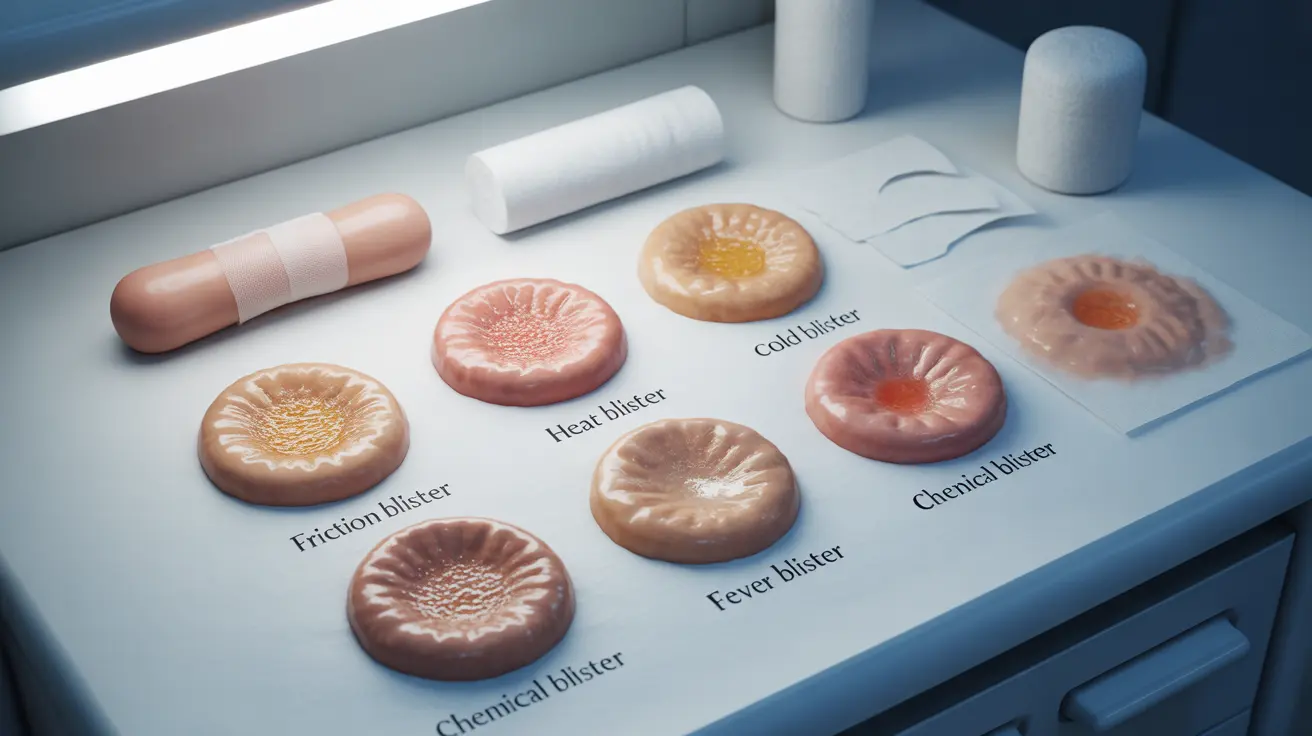Discovering a blister can be frustrating, and the urge to pop it is often strong. However, making the wrong decision about blister treatment could lead to complications or delayed healing. Understanding when to leave a blister alone and when medical intervention might be necessary is crucial for proper wound care and prevention of infection.
This comprehensive guide will help you make informed decisions about blister care, including safe treatment methods, prevention strategies, and signs that indicate when to seek medical attention.
Understanding Different Types of Blisters
Blisters can form for various reasons, and the appropriate treatment often depends on the type you're dealing with:
- Friction blisters (from shoes or repetitive motion)
- Heat blisters (from burns)
- Cold blisters (from frostbite)
- Fever blisters (cold sores)
- Chemical blisters (from exposure to irritants)
The Natural Healing Process
A blister serves as your body's natural protection mechanism. The fluid-filled sac creates a protective barrier over damaged skin, allowing new skin to form underneath while preventing infection. In most cases, leaving the blister intact is the safest approach to healing.
When to Leave a Blister Alone
You should generally avoid popping a blister when:
- It's small or not causing discomfort
- The skin over the blister is intact
- You have underlying health conditions affecting healing
- It's in a sensitive area or on your face
- It's from a burn or other serious injury
Safe Blister Treatment Methods
Protective Measures
To promote healing while preventing further damage:
- Cover the blister with a loose, clean bandage
- Use donut-shaped moleskin around larger blisters
- Keep the area clean and dry
- Change bandages daily or when they become wet
When Medical Drainage May Be Necessary
In some cases, particularly with large or painful blisters, medical drainage might be appropriate. This should be performed by a healthcare professional or with proper sterile techniques if done at home.
Signs of Infected Blisters
Watch for these warning signs that indicate infection:
- Redness spreading beyond the blister
- Warm or hot skin around the area
- Pus or cloudy fluid
- Increased pain or swelling
- Fever or chills
Prevention Strategies
To minimize the risk of blister formation:
- Wear properly fitting shoes
- Use moisture-wicking socks
- Apply protective padding to high-friction areas
- Keep skin dry during activities
- Break in new shoes gradually
Frequently Asked Questions
What are the risks of popping a blister, and when is it safe to do so?
The main risks of popping a blister include infection, delayed healing, and increased pain. It's only safe to drain a blister under sterile conditions when it's large, painful, and likely to burst on its own. Always use sterilized equipment and proper wound care techniques if drainage is necessary.
How can I prevent friction blisters from forming, especially on my feet?
Prevent friction blisters by wearing properly fitting shoes, using moisture-wicking socks, applying antiperspirant to feet, and using protective padding or tape on areas prone to blistering. Break in new shoes gradually and address any hot spots immediately.
What are the symptoms of infection in a blister, and how should I treat it?
Infected blister symptoms include redness, warmth, swelling, pus, and increased pain. If you suspect infection, clean the area with antiseptic, apply antibiotic ointment, cover with a sterile bandage, and seek medical attention if symptoms worsen or you develop fever.
Is it safe to pop a fever blister or cold sore, or what should I do instead?
Never pop fever blisters or cold sores as this can spread the virus and worsen the condition. Instead, use over-the-counter antiviral medications, apply cold compresses, and keep the area clean. Consider prescription medications for recurring outbreaks.
How can I safely drain a blister if it becomes large and painful?
If drainage is necessary, wash hands thoroughly, sterilize a needle with rubbing alcohol, make small holes at the edge, drain fluid while keeping the skin intact, apply antibiotic ointment, and cover with a sterile bandage. However, it's safer to have this done by a healthcare professional.




